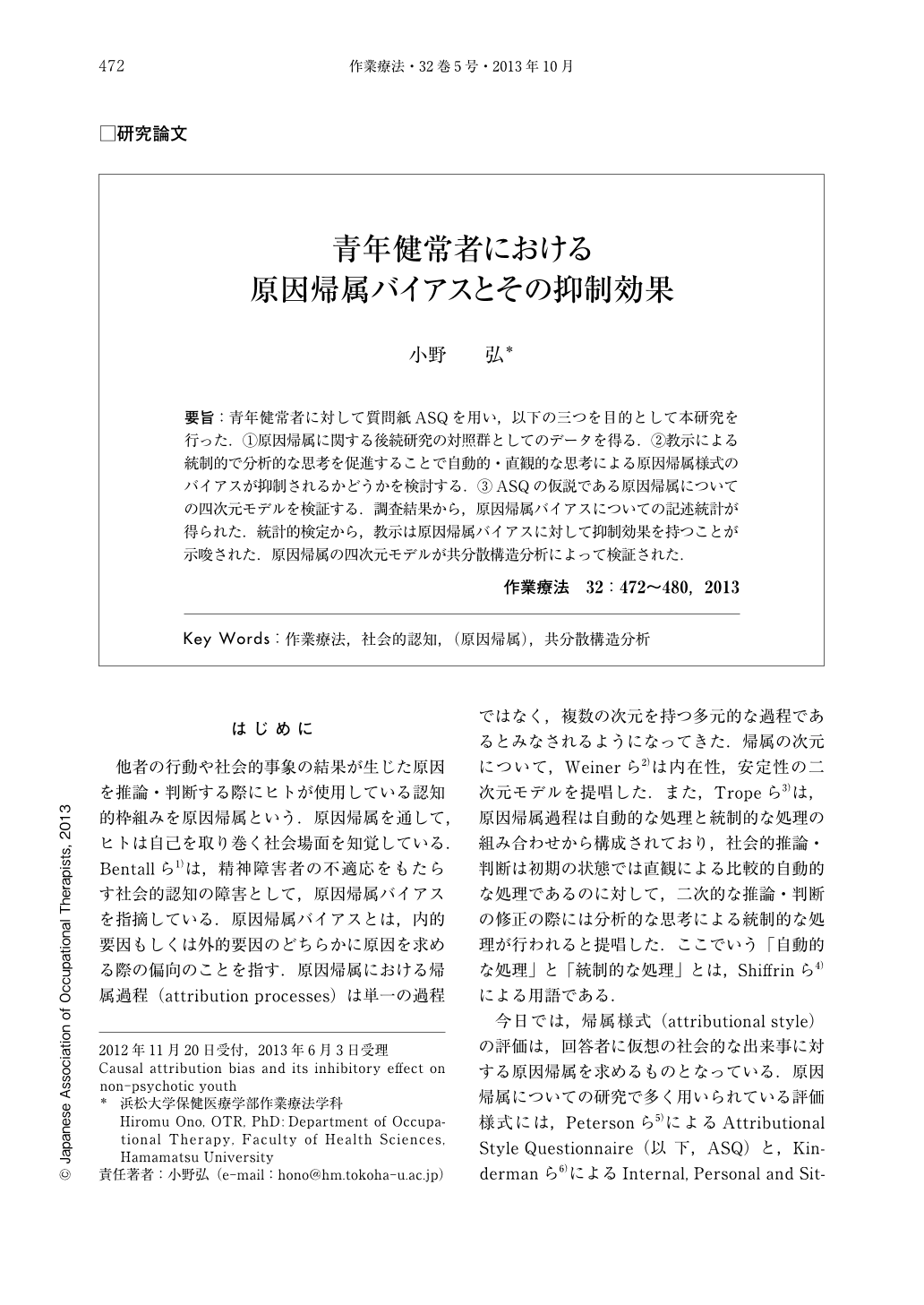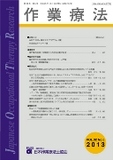Japanese
English
- 販売していません
- Abstract 文献概要
- 1ページ目 Look Inside
- 参考文献 Reference
要旨:青年健常者に対して質問紙ASQを用い,以下の三つを目的として本研究を行った.①原因帰属に関する後続研究の対照群としてのデータを得る.②教示による統制的で分析的な思考を促進することで自動的・直観的な思考による原因帰属様式のバイアスが抑制されるかどうかを検討する.③ASQの仮説である原因帰属についての四次元モデルを検証する.調査結果から,原因帰属バイアスについての記述統計が得られた.統計的検定から,教示は原因帰属バイアスに対して抑制効果を持つことが示唆された.原因帰属の四次元モデルが共分散構造分析によって検証された.
Causal attribution influences social cognition, defines the direction of human behavior and is a key to social adaptation. The purpose of this research was twofold: to see if causal attribution bias from automatic and intuitive thought could be inhibited through guiding controlled and analytic thought with instructions, and to extract suggestions about working dimensions on causal attribution. The subjects were 53 non-psychotic youths, and the Attributional Style Questionnaire (ASQ) created by Peterson et al. was used. ASQ assumes that causal attribution has four dimensions: internality, stability, globality and importance. Descriptive statistics from the ASQ suggested a causal attribution bias on automatic thought, while student's paired t tests suggested that controlled thought with instructions inhibited causal attribution bias on automatic thought. However, only in the dimensions of internality and stability was the effect suggested. In dimensions of globality and importance the effect was not suggested. Covariance structure analysis suggested that the dimensions of internality, stability, globality, and importance influenced causal attribution. In any type of therapy, attributional issues must be considered, and it may be said that knowledge about the inhibitory effect of causal attribution bias is useable for occupational therapy. However, knowledge about the conditions of attributional change was not sufficiently extracted. Therefore, further studies of causal attribution should be conducted.

Copyright © 2013, Japanese Association of Occupational Therapists. All rights reserved.


